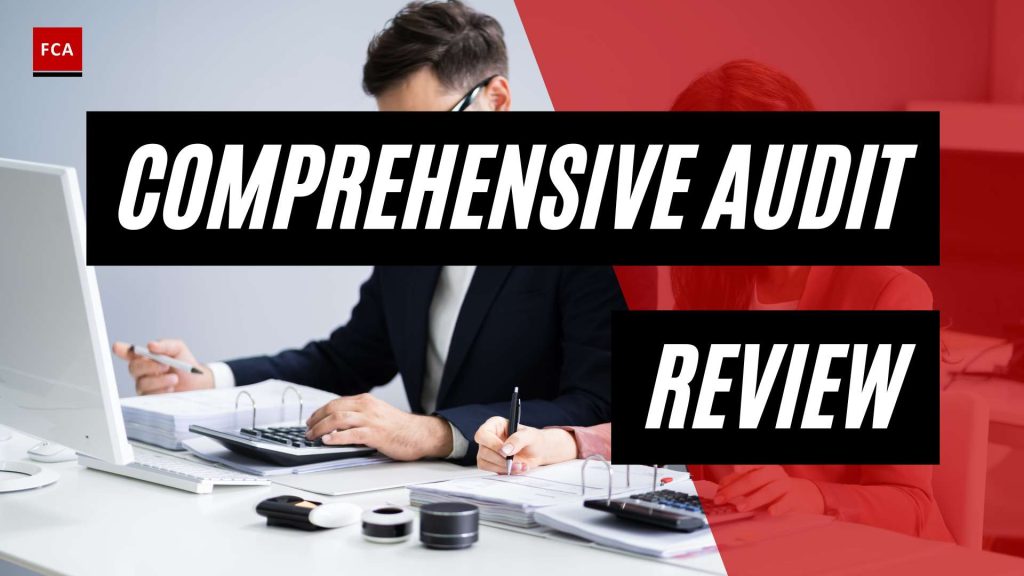Understanding AML Audit Requirements
In the world of financial institutions, Anti-Money Laundering (AML) audits play a crucial role in ensuring compliance with rules and regulations. These audits are designed to assess the effectiveness of an organization’s AML program, identify potential risks, and address any deficiencies that may exist. This section will explore the importance of AML audits and the regulatory framework surrounding them.
Importance of AML Audits
The importance of AML audits cannot be overstated. Financial institutions are required to conduct these audits to ensure compliance with AML regulations and to mitigate the risk of money laundering and terrorist financing activities. A comprehensive AML audit evaluates an organization’s policies, procedures, customer due diligence processes, transaction monitoring practices, and reporting mechanisms to assess their effectiveness in detecting and preventing financial crimes (Financial Crime Academy). By identifying gaps or weaknesses in the AML program, these audits help institutions enhance their AML controls and avoid potential regulatory penalties or reputational damage (Alessa).
Regular AML audits not only assist in the detection and prevention of financial crimes but also demonstrate an organization’s commitment to compliance and integrity. By conducting these audits, financial institutions reassure regulators, customers, and stakeholders about their efforts to combat money laundering and terrorist financing. Moreover, AML audits provide an opportunity for organizations to continuously improve their AML programs, keeping pace with the increasing complexity of financial transactions and evolving money laundering schemes (Alessa).
Regulatory Framework for AML Audits
The regulatory framework surrounding AML audits is stringent and designed to ensure the effectiveness of AML programs. Financial institutions are subject to various regulations and guidelines that govern their AML compliance efforts.
One such regulatory body is the Financial Industry Regulatory Authority (FINRA), which requires firms to have an AML compliance program in place that complies with the requirements of the Bank Secrecy Act (BSA) and the implementing regulations of the Department of the Treasury (FINRA). Another key regulatory authority is the Federal Financial Institutions Examination Council (FFIEC), which emphasizes the responsibility of the board of directors and senior management in maintaining internal controls to ensure continuous compliance with BSA regulatory requirements (FFIEC).
AML audits typically assess an organization’s risk assessment processes, customer due diligence procedures, monitoring and reporting mechanisms, internal controls, and staff training programs related to AML compliance (Alessa). These audits aim to evaluate the effectiveness of an organization’s AML program in meeting regulatory requirements and combating money laundering and terrorist financing activities.
Non-compliance with AML regulations can have severe consequences for financial institutions. Penalties may include financial sanctions, regulatory fines, reputational damage, and legal consequences. In some cases, these penalties can amount to millions of dollars and have long-lasting impacts on an institution’s operations and credibility (Financial Crime Academy).
By conducting AML audits and adhering to the regulatory framework, financial institutions can proactively manage the risks associated with money laundering and terrorist financing, protect their reputation, and contribute to the overall integrity of the financial system.
Components of AML Audits
AML audits play a crucial role in ensuring that financial institutions comply with Anti-Money Laundering (AML) regulations. These audits involve a comprehensive assessment of various components to evaluate the effectiveness of a financial institution’s AML program. The key components of AML audits include:
Reviewing AML Compliance Programs
During an AML audit, the review of AML compliance programs is a fundamental component. This involves examining the policies, procedures, and controls implemented by the financial institution to detect and prevent money laundering and terrorist financing activities. The auditors assess whether the compliance programs align with regulatory requirements and industry best practices. They evaluate the adequacy of the institution’s risk assessment processes, customer identification procedures, and ongoing monitoring measures.
Assessing Internal Controls and Policies
The assessment of internal controls and policies is another crucial aspect of AML audits. Auditors evaluate the design and implementation of internal controls to ensure that they effectively mitigate money laundering risks. They examine the institution’s policies and procedures related to customer onboarding, transaction monitoring, and reporting of suspicious activities. The audit assesses the institution’s adherence to regulatory requirements and the effectiveness of internal controls in detecting and reporting potential money laundering activities.
Evaluating Customer Due Diligence Processes
Customer due diligence (CDD) is a critical process in AML compliance. During an AML audit, the evaluation of CDD processes is performed to determine whether the financial institution has robust procedures in place to verify the identities of customers, assess their potential risks, and monitor their transactions. Auditors review the institution’s CDD policies and procedures, customer identification methods, and ongoing monitoring mechanisms. The objective is to assess the effectiveness of the institution’s CDD processes in identifying and managing money laundering risks.
Examining Transaction Monitoring Practices
Transaction monitoring is a core component of AML programs. Auditors thoroughly examine the financial institution’s transaction monitoring practices to assess their efficiency in detecting and reporting suspicious activities. They evaluate the institution’s transaction monitoring system, alert generation and escalation processes, and the adequacy of resources dedicated to monitoring activities. The audit ensures that the institution’s transaction monitoring practices align with regulatory requirements and effectively identify potentially suspicious transactions.
Ensuring Timely Reporting of Suspicious Activities
Prompt reporting of suspicious activities is a crucial obligation for financial institutions. AML audits assess whether the institution has established robust mechanisms for the timely reporting of suspicious activities to the appropriate authorities. Auditors review the institution’s reporting processes, systems, and procedures to ensure compliance with regulatory requirements. They verify that suspicious activity reports (SARs) are properly documented, accurate, and filed within the specified time frames.
By thoroughly examining these components, AML audits provide financial institutions with a comprehensive evaluation of their AML compliance programs and identify any deficiencies or areas for improvement. This helps institutions strengthen their AML controls, mitigate money laundering risks, and ensure compliance with regulatory obligations. For more information on AML audit requirements, you can refer to our AML audit checklist and AML compliance review articles.
Benefits and Implications of AML Audits
When it comes to Anti-Money Laundering (AML) compliance, conducting thorough AML audits is crucial for organizations to ensure that their financial systems are secure and in compliance with regulatory requirements. AML audits offer a range of benefits while highlighting the potential consequences of non-compliance.
Benefits of AML Audits
The benefits of AML audits are numerous and extend beyond regulatory compliance. Let’s explore some of the key advantages:
- Identification of Weaknesses: AML audits provide organizations with the opportunity to identify weaknesses and vulnerabilities in their AML compliance programs. By conducting regular audits, organizations can detect gaps in internal controls, policies, and procedures, allowing them to take corrective actions before any regulatory violations occur.
- Enhanced Risk Management: AML audits help organizations assess the effectiveness of their risk management strategies. By evaluating internal controls and policies, organizations can identify areas of potential risk and implement measures to mitigate those risks. This proactive approach reduces the likelihood of financial losses and reputational harm.
- Improved Operational Efficiency: AML audits can streamline processes and procedures, leading to increased operational efficiency. By identifying inefficiencies and redundancies, organizations can optimize their AML compliance programs, resulting in cost savings and improved resource allocation.
- Demonstrated Commitment to Compliance: AML audits showcase an organization’s commitment to combating financial crime and protecting the integrity of the global financial system. By conducting regular audits and addressing any identified deficiencies, organizations can enhance their AML compliance programs, reduce the risk of non-compliance penalties, and maintain the trust of regulators, customers, and stakeholders.
Consequences of Non-Compliance
Non-compliance with AML regulations can have severe implications for organizations. The consequences of non-compliance may include:
- Financial Sanctions: Regulatory authorities have the power to impose significant financial sanctions on organizations that fail to comply with AML regulations. These sanctions can result in substantial monetary penalties, which in some cases, can amount to millions of dollars. The financial impact can be detrimental to an organization’s bottom line and long-term sustainability.
- Regulatory Fines: Regulatory bodies have the authority to levy fines on organizations found to be non-compliant with AML regulations. These fines are not only costly but can also tarnish an organization’s reputation. Additionally, repeated non-compliance may lead to increased regulatory scrutiny and ongoing monitoring.
- Reputational Damage: Non-compliance with AML regulations can have a detrimental impact on an organization’s reputation. Negative publicity surrounding non-compliance can lead to a loss of customer trust and loyalty, resulting in a decline in business opportunities and potential damage to long-term relationships.
- Legal Consequences: Non-compliance with AML regulations may also lead to legal consequences, including civil and criminal penalties. In some cases, individuals within the organization may face personal liability, which can result in fines, imprisonment, or both. Legal consequences can have long-lasting impacts on an organization’s operations and credibility.
Given the potential consequences of non-compliance, organizations must prioritize AML audits to demonstrate their commitment to combating financial crime and protecting their operations from regulatory scrutiny and enforcement actions. Implementing robust AML compliance programs and conducting regular audits are essential steps in maintaining regulatory compliance and safeguarding against the risks associated with money laundering and financial crime.
Conducting Effective AML Audits
When it comes to conducting effective AML audits, there are several key considerations that AML auditors must keep in mind. These considerations help ensure a thorough evaluation of an organization’s anti-money laundering (AML) program, its effectiveness, and adherence to regulatory requirements. In this section, we will explore the key considerations for AML auditors, the evaluation of AML program effectiveness, and the importance of taking a risk-based approach to AML audits.
Key Considerations for AML Auditors
AML auditors play a critical role in assessing an organization’s compliance with AML regulations and identifying any potential vulnerabilities or weaknesses in its AML program. To conduct effective AML audits, auditors should consider the following:
- Regulatory Compliance: AML auditors must have a deep understanding of the regulatory framework and requirements pertaining to AML compliance. They should stay up to date with the latest regulations and guidance issued by regulatory authorities.
- Industry Knowledge: AML auditors should possess industry-specific knowledge and expertise to effectively evaluate an organization’s AML program within the context of its particular industry. Different industries may have unique AML risks and requirements.
- Audit Planning: Thorough planning is essential for a successful AML audit. Auditors should develop a detailed audit plan that outlines the scope, objectives, and specific areas to be examined during the audit.
- Audit Procedures: AML auditors should follow established AML audit procedures to ensure consistency and comprehensiveness. These procedures may include transaction testing, policy and procedure reviews, and staff interviews, among other evaluation methods.
- Documentation and Recordkeeping: Proper documentation and recordkeeping are crucial throughout the audit process. Auditors should maintain clear and organized documentation of their findings, observations, and recommendations for future reference and reporting.
Evaluating AML Program Effectiveness
Assessing the effectiveness of an organization’s AML program is a fundamental part of an AML audit. Auditors should examine various aspects of the program, including:
- Risk Assessment Processes: AML auditors should review the organization’s risk assessment methodologies and ensure they are comprehensive and periodically updated. This includes assessing the identification and mitigation of money laundering and terrorist financing risks.
- Customer Due Diligence (CDD) Procedures: Auditors should evaluate the organization’s CDD processes to determine their effectiveness in identifying and verifying customer identities, understanding the nature of customer relationships, and assessing potential risks associated with customers.
- Transaction Monitoring Practices: AML auditors should examine the organization’s transaction monitoring system and procedures to ensure they are capable of detecting and reporting suspicious activities in a timely manner.
- Internal Controls and Policies: Auditors should assess the organization’s internal controls and policies related to AML compliance. This includes evaluating the adequacy of control measures, segregation of duties, and the overall effectiveness of policies in preventing and detecting money laundering activities.
- Training Programs: AML auditors should review the organization’s AML training programs to ensure that staff members receive appropriate and ongoing training on AML policies, procedures, and regulatory requirements.
Risk-Based Approach to AML Audits
Taking a risk-based approach is critical for conducting effective AML audits. A risk-based approach involves tailoring the scope and intensity of the audit based on the organization’s risk profile and the inherent risks associated with its operations. By focusing resources on higher-risk areas, auditors can prioritize their efforts and provide a more targeted evaluation of the organization’s AML program.
A risk-based approach to AML audits considers factors such as the organization’s customer base, geographical locations of operations, types of products and services offered, and any previous AML compliance issues. This approach enables auditors to allocate their time and resources more efficiently and effectively, ensuring that areas of higher risk are thoroughly evaluated.
By considering these key considerations, evaluating AML program effectiveness, and adopting a risk-based approach, AML auditors can conduct comprehensive and impactful audits that help organizations maintain regulatory compliance and enhance their AML defenses.
AML Audit Practices in Different Industries
To ensure compliance with Anti-Money Laundering (AML) regulations, various industries, particularly financial institutions and the legal sector, conduct AML audits to assess their AML compliance programs and identify potential risks and gaps. Let’s explore the AML audit practices in these industries.
AML Audits in Financial Institutions
Financial institutions, such as banks, credit unions, and brokerage firms, are subject to stringent AML regulations. These institutions handle large volumes of financial transactions and are at a higher risk of being exploited for money laundering activities. AML audits play a crucial role in evaluating the effectiveness of their AML programs and ensuring compliance with regulatory requirements.
During AML audits in financial institutions, auditors assess a range of factors, including policies, procedures, internal controls, customer due diligence processes, transaction monitoring practices, and timely reporting mechanisms. The objective is to identify any deficiencies or weaknesses that may hinder the institution’s ability to detect and prevent money laundering and terrorist financing activities.
By conducting regular AML audits, financial institutions can enhance their AML compliance programs, address identified deficiencies promptly, and mitigate the risk of regulatory fines, reputational damage, and legal consequences. These audits help demonstrate the institution’s commitment to combating financial crime and protecting the integrity of the global financial system.
AML Audits in the Legal Industry
The legal industry also plays a significant role in combating money laundering and ensuring AML compliance. Law firms often handle large financial transactions and provide services that may be vulnerable to exploitation by money launderers. AML audits help law firms assess the effectiveness of their AML programs and ensure compliance with regulatory requirements.
During AML audits in the legal industry, auditors evaluate the firm’s AML policies, procedures, risk assessment processes, client onboarding and due diligence practices, and internal controls. They also assess the firm’s ability to identify and report suspicious activities promptly. These audits aim to identify any gaps or weaknesses in the AML program, allowing the firm to enhance its AML controls and minimize the risk of non-compliance penalties.
By conducting regular AML audits, law firms demonstrate their commitment to preventing money laundering and protecting their clients and the legal profession as a whole. These audits help maintain the integrity of financial transactions and contribute to the overall efforts in combating financial crime.
In conclusion, AML audits are essential practices in both the financial and legal industries. By conducting regular audits, financial institutions and law firms can assess the effectiveness of their AML programs, identify areas for improvement, and ensure compliance with regulatory requirements. These audits play a critical role in mitigating the risk of financial crime, protecting institutions from penalties, and maintaining the integrity of the global financial system.
Role of Independent AML Audit Function
When it comes to Anti-Money Laundering (AML) audits, the role of an independent AML audit function is crucial. This section will explore the purpose of independent AML audits and the importance of ensuring objectivity and unbiased evaluation.
Purpose of Independent AML Audits
The purpose of conducting independent AML audits is to evaluate and improve a company’s internal controls, policies, and procedures to ensure compliance with AML regulations. An independent AML audit function provides an objective and unbiased evaluation of a company’s compliance efforts, helping to identify and mitigate potential risks (Sanction Scanner).
By having an independent party perform the AML audit, there is a higher level of assurance that the evaluation is conducted without any conflicts of interest or biases. This enhances the credibility and reliability of the audit findings, providing stakeholders with confidence in the effectiveness of the company’s AML program.
To support the independence of the AML audit function, auditors should ideally be individuals who are not directly involved in areas with potential money laundering concerns. This ensures that the audit is conducted by individuals who can provide an unbiased assessment of the company’s AML program (Sanction Scanner).
Ensuring Objectivity and Unbiased Evaluation
Objectivity and unbiased evaluation are critical factors in the success of an AML audit. To ensure these factors are upheld, it is important to establish an independent AML audit function that operates separately from the operational and compliance functions of the organization.
By separating the AML audit function, auditors can approach their evaluations with a fresh perspective, free from any conflicts of interest that may arise from being directly involved in the day-to-day operations. This independence allows auditors to critically assess the effectiveness of the company’s AML program, identify any deficiencies or gaps, and recommend necessary improvements.
In addition to independence, auditors should adhere to professional standards and ethical guidelines to maintain objectivity throughout the audit process. They should exercise professional skepticism, thoroughly analyze the evidence, and objectively evaluate the company’s compliance efforts. This ensures that the audit findings are based on factual evidence and provide an accurate reflection of the company’s AML program.
By having an independent AML audit function that operates objectively, companies can gain valuable insights into their AML compliance efforts. The audit findings can help identify areas for improvement, enhance risk management practices, and strengthen the overall effectiveness of the AML program.
In conclusion, the role of an independent AML audit function is to provide an objective and unbiased evaluation of a company’s AML program. By separating the audit function from operational and compliance functions, companies can ensure that their AML program is thoroughly assessed and any potential risks are identified and addressed. This helps companies demonstrate their commitment to AML compliance and mitigate the risk of financial crimes.
Frequency and Compliance Standards for AML Audits
To ensure ongoing compliance with anti-money laundering (AML) laws and regulations, conducting regular AML audits is crucial for financial institutions. The frequency of these audits is typically risk-based and follows the compliance standards set by Self-Regulatory Organizations (SROs) and regulatory bodies. Let’s explore the risk-based frequency of AML audits and the compliance standards that institutions must adhere to.
Risk-Based Frequency of AML Audits
The frequency of AML audits varies depending on the risk profile of the financial institution and the nature of the services they provide. As outlined by industry experts at Sanction Scanner, broker-dealers who are members of the Financial Industry Regulatory Authority (FINRA) are required to fulfill annual AML audit requirements. Similarly, commodity futures brokerage companies that are members of the National Futures Association (NFA) must meet AML audit requirements every twelve months (Sanction Scanner).
Financial institutions should conduct AML audits with a risk-based approach, considering factors such as the institution’s size, complexity, customer base, and geographical reach. Higher-risk institutions may require more frequent audits to mitigate the potential risks associated with money laundering and terrorist financing.
Compliance Standards for AML Audits
Financial institutions must conduct AML audits in accordance with the legal mandates and compliance standards set by regulatory bodies. These audits aim to evaluate the effectiveness of an institution’s AML compliance program and identify any deficiencies that need to be addressed.
The compliance standards for AML audits may vary based on the jurisdiction and the nature of the financial services offered by the institution. It is essential for institutions to tailor their audit approaches to meet the specific requirements and expectations of regulators and auditors. Compliance with these standards helps institutions demonstrate their commitment to combating financial crime and protecting the integrity of the global financial system (Financial Crime Academy).
By adhering to the compliance standards and conducting regular AML audits, financial institutions can enhance their AML compliance programs, identify potential weaknesses, and reduce the risk of non-compliance penalties. These audits provide essential feedback on the effectiveness of AML programs, contributing to ongoing improvements in combating money laundering and terrorist financing.
It’s important to note that the specific AML audit requirements may vary based on the jurisdiction and the regulatory environment. Financial institutions should stay updated on the applicable AML regulations and guidelines to ensure their audit programs remain compliant.
In summary, AML audits must be conducted with a risk-based approach, taking into account the institution’s risk profile and the compliance standards established by regulatory bodies. These audits help financial institutions assess the effectiveness of their AML compliance programs and ensure ongoing compliance with AML laws and regulations. By conducting regular AML audits, institutions can proactively identify and address any weaknesses, demonstrating their commitment to combatting financial crime.








